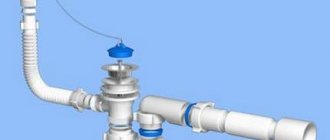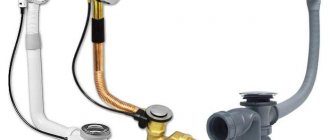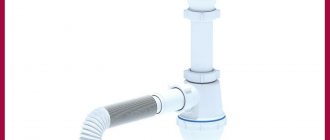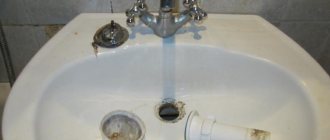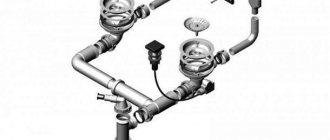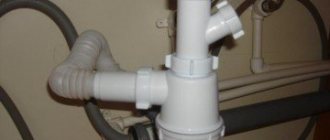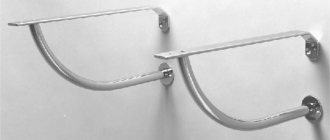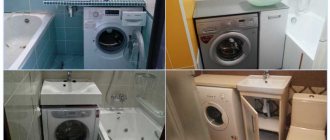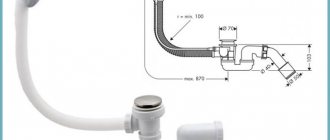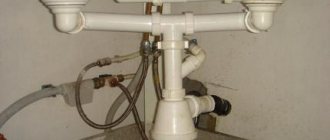A drain-overflow (also called a piping) is a device that facilitates the drainage of liquid into the sewer pipe from the bathtub tank itself. This design consists of a number of tubes and hoses connected to each other. And they, in turn, are adjacent to the sewerage system and to the two openings that the bathtub has. Due to this, the upper hole does not allow water to overflow, and the lower one promotes good drainage. And many who are making renovations or want to change their bathtub are concerned about the question of which drain/overflow should be preferred.
Basic device
What do you need to start from to understand what kind of device this is? Everyone has known since Soviet times a siphon with a rubber stopper on a metal chain. This is what the basic model of the drain-overflow design looks like. Progress in the production of sanitary ware does not stand still. Today, even this design has undergone changes.
To drain the water, you no longer need to bend over and pull out the plug. The bathroom drain has become automated. There are a variety of device types available for sale. The drain-overflow system is often sold together with the bathtub. Masters advise choosing it yourself.
Siphon selection
To choose the most appropriate model, you need to consider a number of important details:
- Features of the sink. There will be a wide choice for a standard one, but it’s a different matter if it has rare features. In such cases, it is better to buy a siphon along with the sink.
- Siphon capacity. If a washing machine or other appliances will be attached to it, it must be high.
- Design. First, decide whether the siphon will be visible or hidden. If the latter, then you don’t need to attach much importance to its appearance, but if it becomes an important part of the interior, it’s better to choose an expensive one, but a beautiful one.
- The diameter of the siphon inlet tube should match the entrance to the sewer, or in extreme cases it should be smaller, but then an adapter will be required.
- Location of sewer outlet. A pipe siphon can only be installed if it is displaced by less than 2 cm; if the displacement is greater, use other types of devices.
- Expensive and cheap models usually do not have fundamental differences in terms of service life, and ease of maintenance is primarily determined by the design. The main thing is to prefer trusted manufacturers whose products have proven themselves.
Description of the drain-overflow mechanism
The function of the device is to drain liquid from the font into the sewer pipe. The entire system consists of interconnected hoses and tubes that are connected to two holes in the bowl and a sewer. The hole at the top on the wall of the bath prevents liquid from overflowing, the hole at the bottom is for draining liquid.
If the structure is installed correctly, then overfilling the tank is basically impossible. You can arrange it later if the speed at which the bowl fills with water is greater than it comes out.
Features of the mechanical drain system
A mechanical type bath siphon with overflow has the simplest design, which is distinguished by reliability, durability, ease of assembly, and low cost. This system does not contain any additional levers or parts. Anyone can install such a siphon on a bathtub without any problems, observing the necessary accuracy and basic assembly rules.
Classification of types of drain mechanism
Three types of devices are considered and each has its own design features.
Standard type device
This simplest design is represented by components:
- a siphon is represented by a pipe. It stops the penetration of unpleasant odors into the room;
- drain hole for overflow;
- liquid outlet hole at the bottom of the bowl;
- connecting tube for siphon and sewer pipe;
- The liquid is poured through a corrugated pipe into the siphon.
The mechanism is called traditional. When the drain neck is closed with a stopper, water is drawn into the tank.
Operational problems may arise with rubber gaskets. They change periodically. The price of a standard mechanism is 10-25 dollars.
It is classified as a reliable mechanism, since there are no moving elements in its design. The simple drain design is easy to assemble and install yourself.
Differences between automatic and semi-automatic mechanisms
Structurally, the drainage mechanism for the bathtub is designed in two types:
- automatic bath drain;
- semi-automatic in the bathroom.
Automatic bath drain
The device is also called “click-click”. The system works very simply. At the bottom of the bowl there is a button that starts the automatic siphon. The first press of the button opens the drain, the second press closes it. The operation of the mechanism depends on the spring that is attached to the system plug.
Types of siphons
They are divided into types according to different principles. One of them is at the installation site. Highlight:
- Bath siphons. They often have a second pipe connected to the overflow hole. Since different bathtub models vary greatly in the location of the drain holes, siphons for them are made so that they can be easily adjusted.
- Dry siphons, also known as drains, are sometimes used for showers. They can be installed directly in the floor - the water goes into a recess in it. They differ in that when they dry out due to infrequent use, a special damper lowers and blocks the outlet, preventing the smell from seeping out from the sewer. The usual type can also be installed in the shower, the design differs little from those intended for a bathtub, only it does not require an overflow pipe.
- The specificity of sink siphons is that they often become dirty due to the fact that it is into the sink that the most waste goes into. Therefore, it is preferable to install easily disassembled devices, mainly bottle ones.
And here is the time to analyze the common types by design:
Bottle
Most often used. They consist of drain and discharge pipes, as well as a container between them, usually shaped like a bottle - called a flask. It can be easily unscrewed if necessary and cleared of accumulated debris. This design has other advantages. If some valuable item falls into the pipe, it will not go straight into the sewer, but will remain in the siphon container and can be retrieved. Fittings for household appliances (usually a washing machine) can be connected to such a device instead of installing an additional pipe.
- pros
- +Takes up less space compared to a pipe siphon
- +The flask is easy to remove and clean.
- Minuses
- -It is more difficult to install than other types of devices.
- -It quickly becomes clogged, water begins to flow poorly, so you have to remove the flask for cleaning quite often.
- -Leaks more often than others because there are too many connections.
- -When moving the sink, the siphon will need to be changed.
A hidden siphon is rarely used. It also belongs to the bottle type, but differs in that the container itself is located inside the wall and is not visible. It costs significantly more.
Corrugated
Corrugated siphons are the simplest of all. This is a corrugated pipe, the frame of which is curved at the outlet. The ability to bend the pipe greatly simplifies the connection in non-standard locations. This device is easy to install and is inexpensive.
- pros
- +The design is very simple and easy to install, you can install it yourself.
- +Does not take up much space, which is valuable when space is limited.
- +The sink can be moved to another place along with the siphon.
- +Low risk of leaks.
- Minuses
- -Due to the fact that the surface is uneven, deposits accumulate on it faster.
- -Cleaning a corrugated device is much more difficult compared to a bottle device. If chemicals do not help, then it will need to be disconnected to clean it.
- -The pipe cannot be disassembled, although this is also a plus - since there are no intermediate connections, leaks occur much less frequently.
Pipe
A pipe siphon is a pipe that differs from a regular one only in that it is curved, usually in the shape of the letter U or S. At the bottom there is usually a hole through which it can be cleaned. But you can’t bend it, which makes cleaning more difficult. There are both collapsible and non-collapsible models.
- pros
- +Simplicity of design.
- +Low price.
- Minuses
- -Complicated installation.
- -Difficult to clean - not recommended for installation in the kitchen.
If used infrequently, the water may evaporate since the water seal is not deep. Because of this, the device will stop working and the smell from the sewer will begin to penetrate into the apartment. If you are away from home for a long time, the drain must be closed with a stopper.
Dry
Dry siphons are less common than previous types and work completely differently. Inside them there is a flattened rubber tube. It opens when there is water inside the device, the rest of the time it contracts. Thus, there is no water inside the siphon: it should be used, for example, in dachas without heating, where other types freeze.
Installation of bath trim
Installation of the system begins only after the position of the bath is fixed. It is set according to level and height. This is especially true for products made of acrylic and metal, since they are unstable due to their light construction.
It is not recommended to completely cover the bathtub structure with facing material without an inspection hatch. It will provide quick access to the drain system in an emergency.
There are general recommendations for installing an automatic and semi-automatic bath overflow drain system:
- After installation, a distance of 15 cm is maintained between the base of the siphon and the floor covering.
- The tee hole is connected to the grille at the drain hole.
- A rubber gasket is installed at the time of connection.
- The siphon is connected to the outlet from the tee using a nut.
- The pipe is fixed on the side at the branch of the tee.
- The siphon is connected to the sewer.
- Each part of the device is sealed.
The work completed is checked. To do this, the tank is filled with water. A dry cloth is spread on the floor so that drops of water are visible if the system is not installed properly. A hole opens and the liquid flows down the drain system.
Operating principle of a bath siphon: semi-automatic
Let's look at what a semi-automatic water drain system is and also answer the question of how it works.
Bath siphon: semi-automatic
The main feature of a semi-automatic siphon is the presence of a thin connecting cable between the mechanisms of the upper part of the drain and overflow system with its lower drain part.
You can open or close the drain siphon with a slight movement of your hand by turning the overflow cover (top of the system).
Among the advantages we can safely highlight:
- Ease of use.
- Aesthetically beautiful appearance of the product (in this case there is no open top part, like old drain systems, which simply looks like a hole covered with a plastic grill).
The disadvantages include the fact that in cheap models, as well as in recast models (copies of models of well-known brands), after a certain time from the start of using the drain system, the connecting cable may begin to jam, which will undoubtedly affect the quality of operation of the entire drain systems.
The siphon can be either brass or copper, depending on the chosen drain system model.
Manufacturers rating
- The automatic model of the Kaiser brand, produced in Germany, has won a leading position in the Russian market. The price of the structure is up to 3.0 thousand rubles.
- For buyers with average incomes, systems from the Viega and Geberit brands are offered. In terms of build quality, Geberit is inferior to Viega.
- Semi-automatic drain-overflow systems from the Abelone brand are in demand on the plumbing market. The automatic mechanism of this company can withstand 50 thousand operating cycles (the mechanism opens and closes). It is made of copper, various coatings are applied. Machine price: 3.2 – 3.5 thousand rubles.
- If you don’t want to spend money on bathtub drainage systems, then Frap brand models are ideal. The company produces budget and luxury devices. Their price: 1.0 – 3.0 thousand rubles.
- Easy to install Equation brand models. The company produces a system for both bathtubs and washbasins. Most models are made of plastic.
